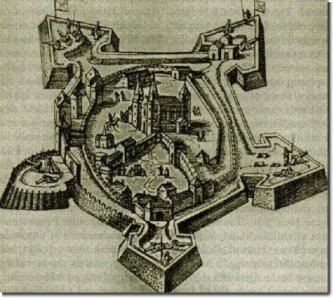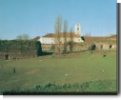|
The Time
|
The Event
|
|
The 4th to the 1st millenium BC
|
Neo-encolitical settlements such as Cotofeni,Badem, Otomani and
Hallstadt
|
|
1st century AD
|
"Dava"(market) type Dacian settlements, discovered in the 19th
century. Dacian treasures of silver jewels. Dacian settlements dating from
the Roman period.
|
|
3rd through 10th centuries
|
Old Romanian settlement.
|
|
1113
|
First time the name of Oradea (Varadinum) is mentioned in a document
of some Benedictine monastery from the actual Slovakia.
|
|
1235
|
First time the city of Oradea is mentioned under the name of Civitas
(fortress)
|
|
1241
|
The Italian monk (who became a bishop in 1249) Ruggero di Puglia,
also known under the name of Rogerius is giving a description or Oradea's
conquest by Tartarians in his Latin poem "Carmen Miserabile."
|
|
1374
|
The documents of the Oradea's Capitol (the community of the 24
priests serving the Cathedral in the fortress) are mentioning two customs
in the city. One of them was located in the Venetia by-street (now called
Velenta), and the Vamii by-street (now Suceava street).
|
|
1409
|
A special area for the library is being built, under the supervision
of the bishop Andrea Scolari, also called the Florencian.
|
|
1502
|
Between 1502 and 1505, the young, later well-known humanist, Nicolaus
Olahus starts his studies in Oradea.
|
|
1514
|
The uprising ruled by Gheorghe Doja also covers the area of Oradea.
|
|
1556
|
Oradea Fortress is conquered by the Habsburgs and becomes part
of the Transylvanian Principality (until 1660). In the meanwhile the domain
of Oradea Fortress is being built and the fortress is being re-built.
|
|
1600
|
December 11, 1600—Mihai Viteazul, on his way to Vienna, passes
through Oradea.
|
|
1660
|
Oradea fortress is conquest by the Turks and changed into a Turkish
province. The fortress remains in this situation until 1692.
|
|
1692
|
The Austrian army re-conquests Oradea fortress in May. At that
time, it only contained 114 houses, among which only 21 were fully operable.
Also during this time the roman-catholic church
Saint Briggita is being built. This church is now known as the Saint
Trinity Orthodox church, located in the Traian Park. It is to be burned
down in 1703 and rebuilt in 1722.
|
|
1703
|
The three markets of the Fortress become fighting camps for the
uprisings between Francisc Racotzi's rebels and the imperial army from
within the fortress. CENTER>
|
|
1722
|
The inhabitants of Oradea are exempted of all their obligations
following a friendly transaction signed by the Local Council of Oradea
and the Oradea Capitol. CENTER>
|
|
1723
|
In 1723 starts the building of the St.
Ladislau church (facing the actual Mayor-house). It will only be finished
20 years later.
|
|
1742
|
In 1742 starts the building of the Capucins Order Monastery (now
the Orphanage from the Sirul Canonicilor Street).
|
|
1780
|
November 1, opens the Royal Oradean Academy with Philosophy classes.
Starting September 1, 1788 it also offers law classes.
|
|
1784
|
The first Orthodox church is being built: the St. Mary's dormition.
The church was build under the supervision of Iacob Eder and it was only
finished in 1790. In its tower there is a mechanism that moves a sphere
standing for the Moon. It was made in 1793 by a watchmaker named George
Rueppe and it shows the moons positions. This is one of the reasons the
church is also known as the "church with the Moon."
|
|
1791
|
Bishop Ignatie Daraband designs and sends, in March, the first
Transylvanian political complaint to Emperor Leopold the 2nd: Supplex Libellus
Valachorum.
|
|
1792
|
In order to face the catholic expansion, in February the Orthodox
Administrative Building is built. On March 30 the second Supplex is presented
to the Austrian Emperor.
|
|
1849
|
Following the Empyreal Decree no. 2842 from December 4, the forth
markets in the nearby area of the fortress Oradea: Olosig, Veneta and Subcetate
are unified in one city, called the Big Oradea, with a total number of
18,000 inhabitants.
|
|
1852
|
June 25 is the day when the Lecture Society in Oradea is created.
This is the first cultural association in the western areas of the country.
|
|
1861
|
Is the year when the first town elections take place.
|
|
1870
|
Is the year when Oradea is registered as County, and the public,
alcohol--based city lightning is introduced.
|
|
1872
|
The first rules regarding vehicles running on Oradea's streets
are created.
|
|
1880
|
The "Family" magazine moves its headquarters in Oradea.
|
|
1898
|
The "Bihoreana" Bank is opened, the first Romanian-credit based
institution in the county of Bihor.
|
|
1906
|
April 24—the first three tramlines are operable.
|
|
1918
|
October 12, in the house of Dr. Aurel Lazar was redacted the text
of the Declaration of National Independence of the Romanians from
|
|
1919
|
April 20—the Romanian soldiers, commanded by General Traian Mosoiu
set Oradea free. A Romanian administration was established after this event.
|
|
1940
|
September 1, takes place a big demonstration of the Romanians from
Oradea and Bihor against the Vienna Dictate.
|
|
1944
|
October 12, the city of Oradea is set free by the Romanian-Soviet
troops and is re-integrated in the Romanian borders. October 12 has become
the city's national day.
|
|
1952
|
The County Library is
built instead of the old Public Library.
|
|
1963
|
The 3-year Pedagogic Institute in Oradea opens its gates in this
year.
|
|
1964
|
The "Iosif Vulcan" Memorial Museum is opened.
|
|
1965
|
The Aluminum Factory in Oradea starts functioning.
|
|
1969
|
The "Sinteza" Chemical Factory becomes operational, and opens the
Children Hospital. CENTER>
|
|
1971
|
The Tarii Crisurilor Museum
moves to its actual center: the Baroque Palace.
|
|
1973
|
In 1973 opens the Oradea University.
|



